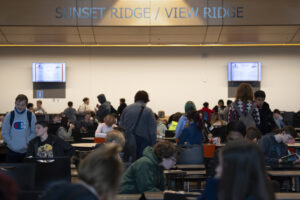We know numbers have a way of dulling the message, but when it comes to the number 80, Camas folks should take note.
This was the number of Camas School District families experiencing homelessness during the 2018-19 school year.
Some slept on couches, relying on the goodwill of friends or relatives for as long as possible. A few slept in their vehicles.
“Hidden in plain sight” is what a 2016 report on the United States’ growing student homelessness crisis called it: “Despite increasing numbers, these students, as well as the school liaisons and state coordinators who support them, report that student homelessness remains an invisible and extremely disruptive problem.”
In Washington, student homelessness is not an issue we can just sweep under the rug and hope it goes away. In fact, according to a 2018 report by the Washington Office of Superintendent of Public Instruction, about one out of every 25 Washington K-12 students experienced homelessness during the 2017-18 school year. In areas with high housing costs, such as Seattle, those numbers jumped to one in 13 students.




